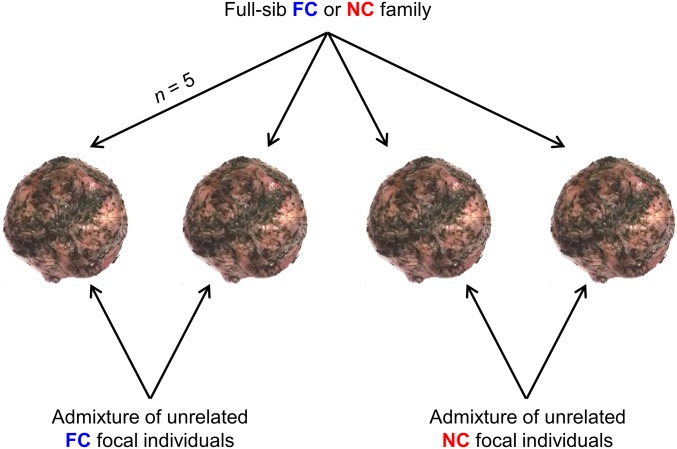Fig. 1.
Experimental design to identify whether the sibling environment provided by different experimentally evolving populations influences the development of focal individuals reared with them. A sample of full-sibling FC or NC families was used to generate the interacting sibling environment (n = 5 larvae per carcass). Unrelated FC or NC focal larvae were then added to those carcasses (n = 5 larvae per carcass) to create broods of 10 larvae. Larvae developed together on the carcass without parental care until they dispersed into the soil to pupate, at which point we measured the mass of each dispersing larva. We used larval mass at dispersal as a proxy for fitness, to deduce whether larval interactions were competitive or cooperative.

